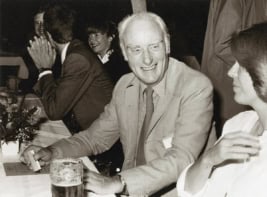Outreach programmes that bring researchers together with school children can yield plenty of rewards for both groups, as Edward Gomez describes

My first brush with science outreach occurred in 1997 while I was in the second year of an MPhys degree in astrophysics at Cardiff University in the UK. During that year’s national science, engineering and technology week I gave a 30 minute talk on cultural cosmogenesis (creation myths to you and me) to the general public. At the end of this talk, I was surprised to find that the audience asked interesting and probing questions, and I felt that I had really achieved something. The experience left me keen to do more public speaking, although the prospect was a little daunting.
For the rest of my undergraduate years I delivered talks related to my course to an audience of my peers, but it was not until my first year as a postgraduate student (also at Cardiff) that I started thinking about being involved with public outreach again. At around this time I saw a flier for the organization Researchers In Residence that had been casually abandoned in our department.
Researchers in Residence (RiR) aims to build mutually beneficial relationships between researchers, who develop communication skills, and secondary-school students, who get to learn more about current scientific research. The organization, which is funded by the Wellcome Trust and Research Councils UK, arranges placements for junior researchers in schools throughout the UK. The organization also supports the researchers during these placements by giving training in how to discuss science with students (while not patronizing them) and by providing projects to work on with students. It also offers a small monetary incentive.
A researcher in residence typically spends 24 hours in total at a school over the course of a year. I chose to spread my placement, which I began in 2000, over a whole year by visiting the school regularly for short periods, but a researcher could instead spend a whole week in a school for an extended activity such as science week, or any other combination that suits the researcher and the school. This degree of flexibility makes the RiR scheme unique among outreach organizations, which, from what I have seen, are usually quite prescriptive about volunteer involvement. RiR trusts its researchers to build a relationship with their school partners, and allows them to work with more than one school and on nearly any project.
Just rewards
The idea of spending a long period with a school immediately appealed to me. Full-time research can be quite an isolated and insular existence, especially for a student in my situation who does not belong to a large research group (or who has a tyrannical supervisor). I, like many conscientious PhD students, worked antisocial and unhealthy hours, and RiR provided a fantastic opportunity to be involved in something stimulating and rewarding but completely removed from my research, which at the time seemed to be going round in ever-tighter circles.
Initially I was involved with two schools. At Whitchurch School in Cardiff I worked with the whole of Year 6 — children of 10–11 years of age — on an alternative-energy project. This involved me giving short talks at the beginning of each class about solar power, wind turbines and the importance of finding alternative sources of energy, and then helping the students with activities such as making miniature wind turbines out of everyday objects. At Howells Girls School in Llandaff I worked with the A-level students and the astronomy club on activities such as finding asteroids and quasars.
Standing in front of a classroom full of school students is a world apart from speaking to members of the public who are “science aware”. The younger students were the most challenging to work with. But in some ways they were also the group that I learned most from, because, although they were undoubtedly the most rowdy, they were not afraid of to ask questions about subjects that older students often take for granted, for instance why stars have to be spherical. At both schools a teacher was always present and was very much involved in the activities, which I found enormously helpful because it meant that I did not have to worry about classroom management.
Being sidetracked by questions from the students was one of the unexpected pleasures of these placements. I was amazed at how enthusiastically the students responded to having a researcher come into their classrooms. I had been fully prepared for them to be uninterested, but instead they were brimming with questions about the Big Bang, dark matter, quantum theory and the old favourite of why the sky is blue. Being there to do science that supplemented the curriculum gave the lessons a certain freedom that the students might not have usually enjoyed, and I really believe this helped the students to see science in a different and more exciting light.
Reaching further
When I completed my PhD in 2005, I moved from astronomy research to astronomy education and public outreach. RiR proved to be my first step to understanding the importance of communicating science to the public in an effective manner and it made me realize that only a fraction of people are able to learn from a subject presented in a talk. For most of us, experiencing science in a hands-on manner leaves a far more valuable and lasting impression. This is something RiR strongly promotes.
I am currently the educational operations manager for the Las Cumbres Observatory Global Telescope Network (LCOGT) and work with the Faulkes Telescope Project, which is supported by the UK philanthropist Dill Faulkes, at Cardiff University. We provide observing time on two robotic telescopes in Hawaii and Australia for UK school pupils and other users in education, as well as facilitating collaborations between schools, amateur societies and professionals around the world. At the core of our education programme are activities for school students, which any researcher is very welcome to use during an RiR placement.
I would encourage every PhD student and postdoc to consider RiR. The organization’s website is packed with useful information about the practical arrangements and guides to the sorts of activities you could take into schools. It is hugely important for us as scientists to show the next generation that physics is a subject that is exciting, dynamic and enjoyable — just think of the first spark that gave you an interest in science. Even if the only outcome of your placement is that the students you meet think differently about science in the future, your time will have been well spent.



